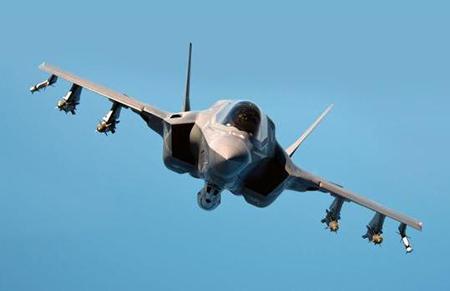Furthermore, the integration of data concerning the identification of threats with the main software is becoming more complicated than expected.
In order to make the surveys more accurate, the F-35 requires files called "threat library", a sort of universal collection of known threats drafted by the secret services.
The constantly updated library is incorporated into the on-board system. What was thought to be a simple upload is turning out to be a nightmare.
The annual report by the director of the Operational Test and Evaluation, Michael Gilmore, is clear.
Despite the improvements made to the software - Gilmore writes - the merging of information from the aircraft's sensors is still lacking.
Gilmore refers to the electro-optical sensor AN / AAQ-37 Distributed Aperture System or DAS.
The DAS - continues Gilmore - continues to show high rates of false alarms, false traces of destination and very poor stability. Problems, the report adds, are also common in other versions of the software.
To make it short: the F-35 alarm system is still too sensitive and detects almost everything identified by the radar as a threat. But the problems, for the JSF, seem to never end for a fighter that continues to absorb resources. The program has already almost doubled its initial budget now at 400 billion.
The F-35 is the most expensive aircraft in history, without considering the five billion dollars needed to extend the operational life of existing fleets or the 650 billion dollars provided by the Government Accountability Office in management costs only for the JSF.
According to some, the main difficulty of the program is inherent in the premise: to carry out a hunt for all the armed forces, without considering the needs of each individual body. A universal platform that, in its intentions, should have performed every task.
The F-35 is supposed to be a bomber, an invisible fighter and able to perform Close Air Support. All combined with a fifth-generation technology, perhaps even beyond.
Other reports emerge. In the 2008 the RAND company, US defense contractor, in a confidential report, analyzing the war simulations with the F-35, defined the fighter as “inferior to the current allied aircraft and not for speed, acceleration, climb, maneuverability, capacity of fire".
In a recent report, even the absorbing radar coating of the fighter is questioned.
As we know, the F-35 is designed for design and upholstery, as a stealth fighter. But it may not be so stealthy as it would already be vulnerable to Chinese and Russian radar detection technologies.
The "Threat library"
Depending on the area of intervention, some data packages on the current mission will be preloaded on the F-35, able to inform the pilot of the type of threat he could face.
The pilots will be able to know exactly the threat. In this way - reads the note from the designers of the JSF - they will know if MiG-29, Su-27 or any other enemy fighter are heading against them.
The new system will serve as a virtual library with all the world-famous enemy threats in addition to those specific to each individual region of the globe.
The new "data packages" are being developed by the American Air Force and have been designed to keep up to date with new information. All available information will be loaded into the database, including all existing specifications on Russian and Chinese fighters. The "sensor fusion" (total integration of all avionics and communication systems) will inform the pilot on the type of threat, summarizing them to the best. In short, it is the aircraft that "speaks" to the pilot, significantly reducing the workload.
The F-35, by interrogating the memory in the system, will tell the pilot if the one detected on the electronic-scan radar is friend and foe, communicating skills, criticalities and strengths.
The Air Force is developing twelve different data packages for as many different geographical areas.
The first four packages will be ready for August 2016, at which time the F-35 will reach initial operational capacity.
Franco Iacch
(photo: Lockheed Martin, author Layne Laughter)












